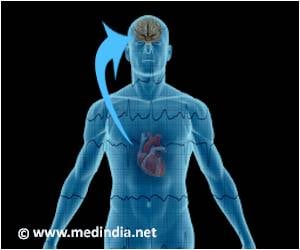- Ischemia is a condition where the blood flow is restricted or reduced in some parts of the body.
- Scientists have found a novel 3D-printed patch that can be infused with cells to treat ischemia.
- The new approach can be promising to grow healthy blood vessels.
The newly developed patch has been found to offer the growth of new vessels by avoiding some of the problems of other approaches.
The research study is published in the Nature Biomedical Engineering.
Chen said, "Therapeutic angiogenesis, when growth factors are injected to encourage new vessels to grow, is a promising experimental method to treat ischemia."
"But in practice, the new branches that sprout form a disorganized and tortuous network that looks like sort of a hairball and doesn't allow blood to flow efficiently through it. We wanted to see if we could solve this problem by organizing them."
The research team has designed two patches with endothelial cells. One of them is where the cells has been pre-organized to a specific architecture. The other one is where the cells have been injected without any organizational structure.
The invivo results have demonstrated that the patches with pre-organized structure have shown a marked improvement in reducing ischemia.
Ozaki said, "This pre-clinical work presents a novel approach to guide enhanced blood flow to specific areas of the body."
"The augmented blood nourishment provides valuable oxygen to heal and functionally preserve vital organs such as the heart and limbs."
3D Printed Patch
In order to 3D print vessels on a small scale, that is 100microns can be small enough for tiny blood vessels.
The research team in connection with Innolign, Boston Biomedical Technology, found that the 3D printing approach has allowed to change and test their designs. And could also help them to recognize on which pattern could work well.
Also, the 3D printing technology could allow for scalability which might be helpful to test the design in larger or more complex and tissue environments.
Chen said, "One of the questions we were trying to answer is whether or not architecture of the implant mattered, and this showed us that yes, it does, which is why our unique approach using a 3D printer was important."
"The pre-organized architecture of the patch helped to guide the formation of new blood vessels that seemed to deliver sufficient blood to the downstream tissue. While it wasn't a full recovery, we observed functional recovery of function in the ischemic tissue."
Although the study results are promising, the approach is still in the earlier stages. Further research on the scalability of the 3D patches by different architectures could help to know if the structure could work better even when they have tried.
Chen said, "This project has been long in the making, and our clinical collaborators have been indispensable to the success of the project."
"As a bioengineer, we were focused on how to actually build the patch itself, while the clinical perspective was critical to the design process. We look forward to continuing our partnerships as we move forward."
What is Ischemia?
Ischemia is a condition where the blood flow is restricted or reduced in some parts of the body. It is often referred to as the decreased blood flow or oxygen supply to the heart muscle.
Symptoms of Ischemia include
- Angina
- Shortness of breath
- Fatigue
- Heart palpitations
- Swelling of the legs and feet
- T. Mirabella, J. W. MacArthur, D. Cheng, C. K. Ozaki, Y. J. Woo, M. T. Yang, C. S. Chen. 3D-printed vascular networks direct therapeutic angiogenesis in ischaemia. Nature Biomedical Engineering, 2017; 1 (6): 0083 DOI: 10.1038/s41551-017-0083
- Silent Ischemia and Ischemic Heart Disease - ( http://www.heart.org/HEARTORG/Conditions/HeartAttack/TreatmentofaHeartAttack/Silent-Ischemia-and-Ischemic-Heart-Disease_UCM_434092_Article.jsp#.WUJQHMmSTIU)
Source-Medindia










